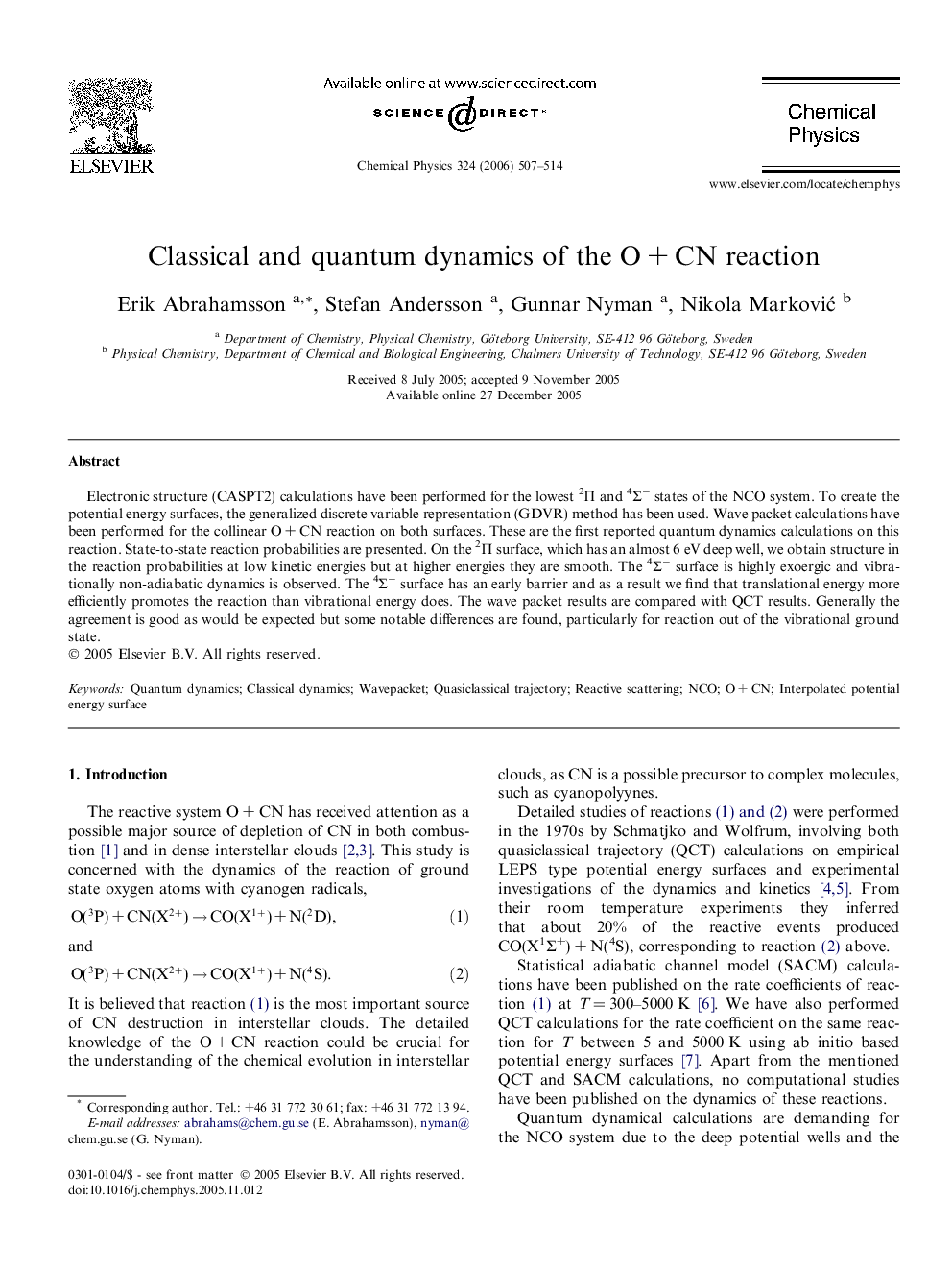| Article ID | Journal | Published Year | Pages | File Type |
|---|---|---|---|---|
| 5377216 | Chemical Physics | 2006 | 8 Pages |
Abstract
Electronic structure (CASPT2) calculations have been performed for the lowest 2Î and 4Σâ states of the NCO system. To create the potential energy surfaces, the generalized discrete variable representation (GDVR) method has been used. Wave packet calculations have been performed for the collinear O + CN reaction on both surfaces. These are the first reported quantum dynamics calculations on this reaction. State-to-state reaction probabilities are presented. On the 2Î surface, which has an almost 6 eV deep well, we obtain structure in the reaction probabilities at low kinetic energies but at higher energies they are smooth. The 4Σâ surface is highly exoergic and vibrationally non-adiabatic dynamics is observed. The 4Σâ surface has an early barrier and as a result we find that translational energy more efficiently promotes the reaction than vibrational energy does. The wave packet results are compared with QCT results. Generally the agreement is good as would be expected but some notable differences are found, particularly for reaction out of the vibrational ground state.
Keywords
Related Topics
Physical Sciences and Engineering
Chemistry
Physical and Theoretical Chemistry
Authors
Erik Abrahamsson, Stefan Andersson, Gunnar Nyman, Nikola MarkoviÄ,
